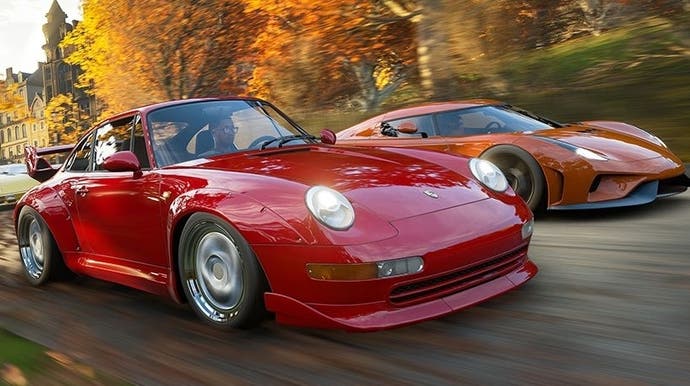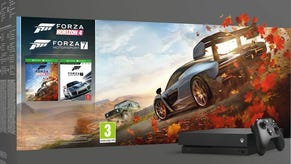Forza Horizon 4 on Xbox Series X and S is upgraded in key areas but downgraded in others
It's good but not quite the home run we hoped for.
Forza Horizon 4 isn't just one of the best Xbox exclusives, it's also one of the greatest racing games ever made. A couple of years back, we lauded excellent Xbox One, One X and PC versions - and loved the way that Microsoft's enhanced console offered the option of 1080p60 racing, a first for the series. With the arrival of Xbox Series X and the junior S, 60fps is now the standard. Advantages for the new version are plain to see across the board, but surprisingly - and disappointingly - there are some visual cutbacks too.
With this new patch, Forza Horizon no longer has multiple performance modes to choose from. In theory, it should no longer need them. Xbox Series X has twice the GPU power of Xbox One X, so it stands to reason that One X's 4K30 quality mode should transition to 4K60 on the new X. Meanwhile, Series S delivers feature parity and operates at 1080p instead. Put them side by side, and the quadrupling of resolution is obvious and greatly aids the game's presentation. Forza Horizon 4 primarily takes place outdoors with a lot of distant detail, foliage, and thinner geometry elements - so this increased resolution means a much greater fidelity at a distance and a lessened amount of flickering and aliasing across the entire image. Looking closely at textures, Xbox Series X delivers improved texture quality compared to its Series S counterpart. Partially, this is due to resolution but environmental texture quality is also improved.
Another upgrade that comes with the generational shift is derived from the faster storage and CPU, resulting in a big reduction in lag in the interface. There are also highly significant loading time improvements: loading from the menu to the open world takes 61 seconds on Xbox One X, dropping to just 18.5 seconds on Series X. Loading up a user-made racing event on Xbox One X takes 25.5 seconds, reduced to just 11.5 on Series X. This reduction in downtime is excellent and generally makes the open world and event-based nature of the game much more enjoyable. Since both Series consoles have similar architectures, they also have similar loading times. I tested main menu to open world loading on both machines and saw nigh-on identical results.
Performance also looks impressive on both machines. I have played a number of user-created racing events and spent a lot of time driving around the game in various weather conditions and it's hard to fault the delivery from either of the new Series machines. The open world effectively runs flawlessly (bar a curious stutter on Series X I could not reproduce) and there is only the most minor of slowdown in events, usually before the racing begins - which is essentially unnoticeable since there is no user control.
Again, performance between both machines seems to be essentially like-for-like, but a few more dropped frames did manifest on Series S. It's mostly irrelevant to the gameplay experience, but the fact they are there at all is puzzling: Xbox Series S is designed to run native 4K content at 1440p. Here, 33 per cent of the rendering power is deployed to deliver just 25 per cent of the pixels - there should be overhead here, but that doesn't quite seem to be the case with actual in-game performance.
Of course, there's more to a game than resolution and frame-rate - the quality of the pixels is of paramount importance. Back in 2018, I found that Xbox One X's two graphical modes ran at different settings for various aspects of the game. To hit 1080p60, Playground pared back motion blur, reflection quality and world car detail, and disabled night shadows cast by your headlights. Car reflections in the 60fps mode were a mix of ultra and high for their resolution and the amount of objects drawn, but they ran at 30fps like PC's low setting. So for Xbox Series X, I expected all of these compromises to be gone; I came in expecting One X's 4K30 quality mode running at 60fps but unfortunately that is not the case.


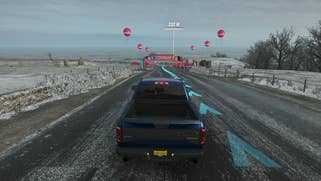
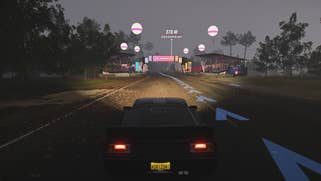
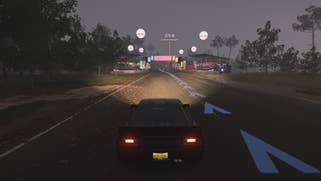
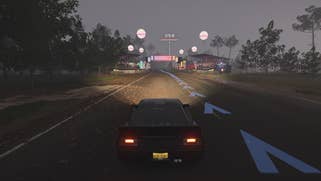
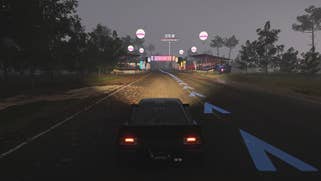


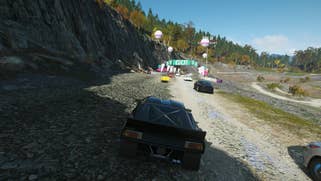

You do get some upgrades - car model quality is improved, while the real-time probe reflections applied to vehicles now run at 60fps as well, unlike Xbox One X. Unfortunately, not much else is improved over the 1080p60 mode on Xbox One X, so by extension, we're missing features found in One X's quality mode. For the Series consoles, that means that headlight shadows at night are not present in races, only in the open world - they're present in both at 4K30 on One X. Most confusing of all is the complete absence of screen-space ambient occlusion (SSAO) - so while areas in shadow on Xbox Series X may possess a high resolution, they lack believable shading and look very plain. Although not as important, motion blur is still using the similar, lower sample count found on the Xbox One X 1080p60 mode and it is also using the short shutter speed option as found on PC, so it is nearly invisible in most scenes. My biggest problem here is that overall, the visuals simply don't look as good as the 4K30 quality mode on Xbox One X.
There are other issues too - like the fact that third-person driver models update their animations at 30fps on Series consoles, while everything else runs at 60fps. This is not an issue with Playground's original code, as the PC version runs these animations at the correct frame-rate. It's also worth pointing out that all of these issues are present on both Xbox Series X and Series S - they are effectively the same game, simply operating with different resolution targets. However, focusing on Series X specifically, given the GPU and CPU differential here gen on gen, I do wonder why there are any concessions to visual quality at all - you look at the wealth of enhancements found in Gears 5 on Series X, not to mention the resolution differential between X and S consoles and it's clear that Forza Horizon 4 isn't delivering the same kind of improvement.
Overall, my reaction to the Forza Horizon 4 upgrade for Series consoles is mixed. This is still one of the best driving games ever made, it still looks gorgeous and the quality of life improvements delivered by the faster CPU and storage are much appreciated, while the advantages of 60 frames per second in this genre can't be understated. However, it can't be right that a next-gen upgrade should compromise on visual features when we know the hardware is capable of more. We did share our findings with Microsoft as soon we saw that something was amiss - and we're told that SSAO may well be back in the first title update. With a studio as talented as Panic Button on development duties, I remain hopeful that Series X and S will deliver the definitive Forza Horizon 4 console experience in the fullness of time - with no compromises.
